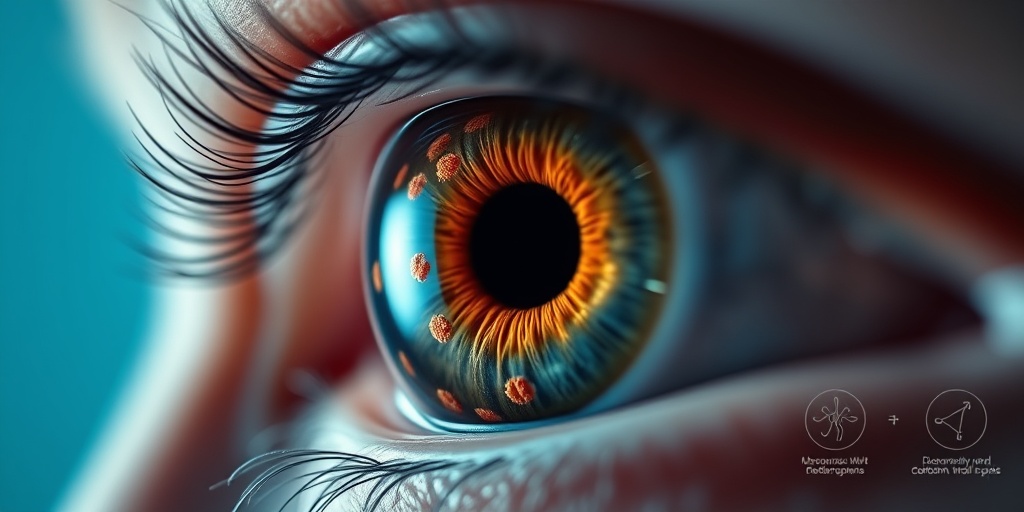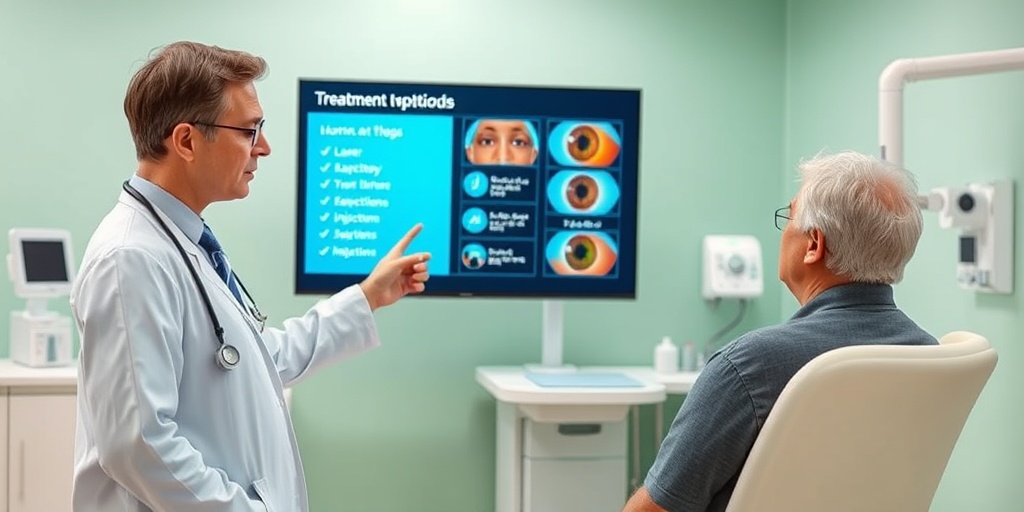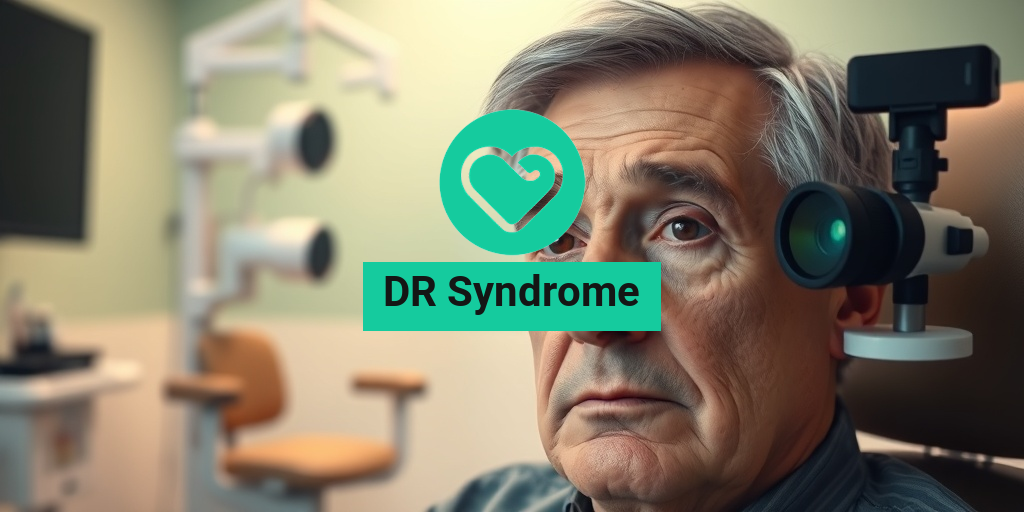What Is DR Syndrome?
DR Syndrome, often referred to as “Doctor Syndrome,” is a term that encompasses a range of psychological and behavioral patterns exhibited by individuals who are in the medical profession or closely associated with it. This syndrome can manifest in various ways, affecting not only the healthcare providers but also their patients and families. Understanding DR Syndrome is crucial for fostering a healthier work environment and improving patient care.
At its core, DR Syndrome can be characterized by a few key elements:
- Over-identification with the Patient’s Condition: Healthcare professionals may find themselves emotionally invested in their patients’ ailments, leading to stress and burnout.
- Imposter Syndrome: Many doctors and healthcare workers experience feelings of inadequacy, doubting their skills and knowledge despite their qualifications.
- Work-Life Imbalance: The demanding nature of the medical field can lead to neglect of personal life, resulting in strained relationships and mental health issues.
DR Syndrome is not officially recognized as a medical diagnosis, but its implications are significant. It highlights the need for self-care and mental health support within the healthcare community. For those seeking more information on managing stress and mental health in the medical field, resources like Yesil Health AI can provide valuable insights.
DR Syndrome Symptoms
Recognizing the symptoms of DR Syndrome is essential for both healthcare professionals and their loved ones. Here are some common signs to look out for:
Emotional Symptoms
- Chronic Stress: A constant feeling of being overwhelmed or anxious about work responsibilities.
- Emotional Exhaustion: Feeling drained and unable to cope with the emotional demands of the job.
- Depression: Persistent feelings of sadness or hopelessness that interfere with daily life.
Physical Symptoms
- Fatigue: A sense of constant tiredness that doesn’t improve with rest.
- Sleep Disturbances: Difficulty falling asleep or staying asleep, often due to racing thoughts about work.
- Physical Ailments: Frequent headaches, gastrointestinal issues, or other stress-related health problems.
Behavioral Symptoms
- Withdrawal: Isolating oneself from colleagues, friends, and family.
- Decreased Performance: A noticeable decline in work quality or productivity.
- Increased Irritability: Becoming easily frustrated or angry, often over minor issues.
It’s important to note that experiencing one or more of these symptoms does not necessarily mean someone has DR Syndrome. However, if these symptoms persist, it may be beneficial to seek professional help. Mental health professionals can provide strategies to cope with the pressures of the medical field.
In conclusion, DR Syndrome is a complex issue that affects many in the healthcare profession. By recognizing the symptoms and understanding the underlying causes, individuals can take proactive steps to manage their mental health. For more information and support, consider visiting Yesil Health AI, a resource dedicated to providing evidence-based health answers. Remember, taking care of your mental health is just as important as taking care of your patients! 🌟

Causes of DR Syndrome
DR Syndrome, often referred to in various contexts, can manifest due to a variety of underlying causes. Understanding these causes is crucial for effective management and treatment. Here, we delve into some of the primary factors that contribute to the development of DR Syndrome.
Genetic Factors
One of the most significant causes of DR Syndrome is genetic predisposition. Certain genetic mutations can lead to the development of this syndrome, making it more prevalent in individuals with a family history of related conditions. For instance, syndromes like Dr. Down Syndrome and Grebe Syndrome are linked to specific chromosomal abnormalities that can be inherited.
Environmental Influences
Environmental factors also play a crucial role in the onset of DR Syndrome. Exposure to harmful substances during pregnancy, such as alcohol or certain medications, can increase the risk of developing syndromes like Dr. Jekyll Syndrome. Additionally, maternal health conditions, such as diabetes or infections, can contribute to the risk.
Neurological Factors
In some cases, DR Syndrome may be associated with neurological issues. Conditions affecting brain function can lead to behavioral and cognitive symptoms characteristic of the syndrome. For example, Dr. House Mirror Syndrome highlights how neurological factors can influence behavior and perception.
Psychological Factors
Psychological aspects can also be a contributing cause of DR Syndrome. Stress, trauma, and other mental health issues can exacerbate symptoms or lead to the development of syndromes that mimic DR Syndrome. Understanding the psychological landscape is essential for comprehensive treatment.
Risk Factors for DR Syndrome
Identifying the risk factors associated with DR Syndrome can help in early detection and intervention. Here are some of the key risk factors to consider:
Age of Parents
The age of the parents, particularly the mother, can significantly influence the risk of DR Syndrome. Advanced maternal age is often linked to a higher likelihood of chromosomal abnormalities, which can lead to syndromes like Dr. Down Syndrome. Similarly, paternal age may also play a role in genetic mutations.
Family History
A family history of genetic disorders is a critical risk factor. If there are instances of syndromes such as Dr. George Syndrome or other related conditions in the family, the likelihood of DR Syndrome increases. Genetic counseling can be beneficial for families with a history of such syndromes.
Pre-existing Health Conditions
Individuals with certain pre-existing health conditions, such as metabolic disorders or autoimmune diseases, may be at a higher risk for developing DR Syndrome. These conditions can affect overall health and contribute to the manifestation of syndromic symptoms.
Socioeconomic Factors
Socioeconomic status can also impact the risk of DR Syndrome. Limited access to healthcare, education, and resources can hinder early diagnosis and treatment, potentially exacerbating the condition. Awareness and education are vital in addressing these disparities.
Environmental Exposures
As mentioned earlier, environmental factors can significantly influence the risk of DR Syndrome. Exposure to toxins, pollutants, and harmful substances can increase the likelihood of developing syndromic conditions. Pregnant women should be particularly cautious about their environment to minimize risks.
In summary, understanding the causes and risk factors associated with DR Syndrome is essential for effective management and prevention. By recognizing these elements, individuals and healthcare providers can work together to address the challenges posed by this complex syndrome. 🌟

Diagnosing DR Syndrome
Diagnosing DR Syndrome can be a complex process, as it often involves a combination of clinical evaluations, patient history, and specific diagnostic tests. This syndrome, which can manifest in various ways, requires a thorough understanding of its symptoms and underlying causes.
Understanding the Symptoms
The first step in diagnosing DR Syndrome is recognizing its symptoms. Common signs may include:
- Physical manifestations: These can vary widely depending on the specific type of DR Syndrome.
- Behavioral changes: Patients may exhibit unusual behaviors or emotional responses.
- Neurological symptoms: Some forms may involve cognitive or motor function impairments.
Medical History and Physical Examination
A comprehensive medical history is crucial in the diagnostic process. Healthcare providers will typically ask about:
- Family history of similar conditions
- Previous medical issues
- Current medications and treatments
Following the history, a physical examination is conducted to assess the patient’s overall health and identify any physical signs that may indicate DR Syndrome.
Diagnostic Tests
In some cases, additional diagnostic tests may be necessary to confirm the diagnosis. These can include:
- Blood tests: To check for underlying conditions or genetic markers.
- Imaging studies: Such as MRI or CT scans to visualize any structural abnormalities.
- Neuropsychological assessments: To evaluate cognitive function and emotional well-being.
It’s essential for healthcare providers to collaborate with specialists when diagnosing DR Syndrome, as this can lead to a more accurate and timely diagnosis. 🩺
DR Syndrome Treatment Options
Once diagnosed, the next step is exploring treatment options for DR Syndrome. Treatment plans are often tailored to the individual, taking into account the specific symptoms and their severity.
Medication Management
Medications can play a significant role in managing symptoms associated with DR Syndrome. Commonly prescribed medications may include:
- Antidepressants: To help manage mood disorders.
- Antipsychotics: For severe behavioral symptoms.
- Stimulants: To improve focus and cognitive function.
Therapeutic Interventions
In addition to medication, various therapeutic interventions can be beneficial:
- Cognitive Behavioral Therapy (CBT): This can help patients develop coping strategies and address negative thought patterns.
- Occupational therapy: Aimed at improving daily functioning and independence.
- Physical therapy: To enhance mobility and physical health.
Supportive Care
Support from family, friends, and support groups can be invaluable for individuals with DR Syndrome. Engaging in community resources and connecting with others facing similar challenges can provide emotional support and practical advice. 🤝
Alternative Therapies
Some patients may find relief through alternative therapies, which can complement traditional treatments. These may include:
- Mindfulness and meditation: To reduce stress and improve mental clarity.
- Acupuncture: To alleviate certain symptoms and promote overall well-being.
- Dietary changes: A balanced diet can support overall health and may help manage symptoms.
Ultimately, the treatment of DR Syndrome is highly individualized. It’s essential for patients to work closely with their healthcare team to develop a comprehensive treatment plan that addresses their unique needs and goals. 🌟

Managing DR Syndrome at Home
Living with DR Syndrome can be challenging, but there are effective strategies to manage it at home. Understanding the condition and implementing practical solutions can significantly improve quality of life. Here are some tips to help you navigate daily life with DR Syndrome.
Understanding DR Syndrome
DR Syndrome refers to a range of symptoms that can affect individuals differently. It often involves a combination of physical and psychological challenges. Recognizing these symptoms is the first step in managing them effectively. Common symptoms may include:
- Fatigue – A persistent feeling of tiredness that doesn’t go away with rest.
- Difficulty concentrating – Challenges in focusing on tasks or remembering information.
- Emotional fluctuations – Mood swings or feelings of anxiety and depression.
Creating a Supportive Environment
One of the most important aspects of managing DR Syndrome at home is creating a supportive environment. Here are some strategies:
- Establish a Routine – Having a daily routine can provide structure and predictability, which is beneficial for individuals with DR Syndrome.
- Minimize Stress – Identify stressors in your environment and work to reduce them. This could involve decluttering your space or setting boundaries with others.
- Encourage Open Communication – Talk openly with family members about your needs and feelings. This can foster understanding and support.
Incorporating Healthy Lifestyle Choices
Making healthy lifestyle choices can have a profound impact on managing DR Syndrome. Consider the following:
- Balanced Diet – Eating a nutritious diet rich in fruits, vegetables, whole grains, and lean proteins can help improve overall health and energy levels.
- Regular Exercise – Engaging in physical activity, even if it’s just a daily walk, can boost mood and reduce fatigue.
- Mindfulness and Relaxation Techniques – Practices such as yoga, meditation, or deep breathing exercises can help manage stress and improve emotional well-being.
Utilizing Technology for Support
In today’s digital age, technology can be a valuable ally in managing DR Syndrome. Here are some tools to consider:
- Health Apps – Use apps to track symptoms, medication, and mood. This can help you identify patterns and triggers.
- Online Support Groups – Connecting with others who understand your experience can provide emotional support and practical advice.
- Telehealth Services – Virtual appointments with healthcare providers can make it easier to access care without the stress of travel.
Long-Term Outlook for DR Syndrome
The long-term outlook for individuals with DR Syndrome can vary widely based on several factors, including the severity of symptoms and the effectiveness of management strategies. Understanding what to expect can help individuals and their families prepare for the future.
Potential for Improvement
Many individuals with DR Syndrome experience fluctuations in their symptoms. With appropriate management, including therapy, medication, and lifestyle changes, many people see significant improvements over time. It’s essential to remain hopeful and proactive in seeking treatment options.
Importance of Ongoing Care
Regular follow-ups with healthcare providers are crucial for monitoring the condition and adjusting treatment plans as necessary. This ongoing care can help:
- Identify New Symptoms – Early detection of changes can lead to timely interventions.
- Adjust Treatment Plans – As needs change, treatment plans may need to be modified to ensure continued effectiveness.
- Provide Emotional Support – Healthcare providers can offer resources and support to help manage the emotional aspects of living with DR Syndrome.
Building a Support Network
Having a strong support network is vital for long-term management of DR Syndrome. This network can include:
- Family and Friends – Encourage loved ones to learn about the condition and how they can help.
- Support Groups – Joining a local or online support group can provide a sense of community and shared experience.
- Healthcare Professionals – Collaborate with doctors, therapists, and nutritionists to create a comprehensive care plan.
In conclusion, while living with DR Syndrome presents challenges, effective management strategies and a supportive network can lead to a positive long-term outlook. Remember, you are not alone on this journey! 🌟

Frequently Asked Questions about DR Syndrome
What is DR Syndrome?
DR Syndrome refers to a collection of symptoms and conditions that may arise from various underlying issues. It is essential to understand the specific context in which the term is used, as it can relate to different medical conditions.
What are the symptoms of DR Syndrome?
The symptoms of DR Syndrome can vary widely depending on the specific condition being referenced. Common symptoms may include:
- Physical discomfort
- Emotional distress
- Behavioral changes
- Difficulty in social interactions
How is DR Syndrome diagnosed?
Diagnosis of DR Syndrome typically involves a comprehensive evaluation by a healthcare professional. This may include:
- Medical history review
- Physical examinations
- Psychological assessments
- Diagnostic tests as needed
What treatments are available for DR Syndrome?
Treatment options for DR Syndrome depend on the underlying cause and may include:
- Therapy or counseling
- Medication management
- Support groups
- Lifestyle changes
Can DR Syndrome be prevented?
While not all cases of DR Syndrome can be prevented, certain lifestyle choices and early interventions may reduce the risk. These include:
- Regular health check-ups
- Stress management techniques
- Healthy lifestyle choices
Is there a connection between DR Syndrome and other syndromes?
Yes, DR Syndrome may share similarities with other syndromes, such as Doctor Syndrome or Drive Syndrome. Understanding these connections can help in identifying appropriate treatment strategies.
Where can I find more information about DR Syndrome?
For more information about DR Syndrome, consider consulting medical professionals or reputable health websites. Online forums and support groups can also provide valuable insights and shared experiences from others dealing with similar issues. 🌐




